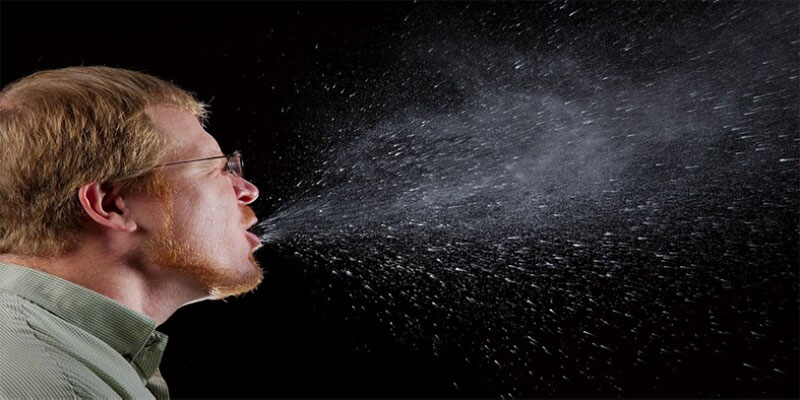
Why Do We Sneeze
Jan 29, 2023
Why Do We Sneeze? Sneezing, or sternutation happens when the body detects an irritating or foreign particle in the nasal passages. This physical process is one that almost everyone will go through at some time in their life. Many different things, such as allergens, irritants, respiratory infections, hormonal shifts, and neurological abnormalities, might set off a bout of sneezing. Sneezing occurs when nerve receptors in the nose identify an irritant or foreign particle, sending a signal to the brain that triggers the contraction of the muscles in the nose and throat, resulting in the expulsion of air and mucus—sneezing aids in nasal tube clearance, immune system strengthening, and the reduction of sinus pressure. Sneezing is a normal action that is often misunderstood despite being a frequent body function. However, by learning more about its origins, mechanics, and purposes, we may better comprehend sneezing and put these misunderstandings to rest.
Causes Of Sneezing
Several different factors can trigger a sneeze, including:
- Allergens: Sneezing is a common symptom of allergic reactions, such as hay fever. When the body comes into contact with an allergen, such as pollen or dust, it releases histamine and other chemicals to fight the perceived threat. These chemicals can cause inflammation and swelling in the nasal passages, leading to sneezing.
- Irritants: Certain substances, such as smoke, strong odors, or chemicals, can irritate the nasal passages and trigger a sneeze. This is known as a reflex sneeze.
- Respiratory infections: Sneezing is a common symptom of respiratory infections, such as the common cold or the flu. This is because the body is trying to clear the nasal passages of mucus and other debris that has built up due to the infection.
- Hormonal changes: Hormonal changes, such as those that occur during pregnancy, can also cause sneezing.
- Neurological disorders: Neurological disorders, such as trigeminal neuralgia, can cause sneezing.
The Mechanism Of Sneezing

Sneezing is a reflex action that is controlled by the nervous system. When an irritant or foreign particle enters the nasal passages, it is detected by nerve receptors in the nose. This sends a signal to the brain, which then sends a signal back to the muscles in the nose and throat, causing them to contract and expel air.
The process of sneezing can be broken down into three stages:
- The first stage is the inhalation phase. This is when the person takes a deep breath, preparing to sneeze.
- The second stage is the sneeze itself. During this stage, the muscles in the nose and throat contract, expelling air and mucus out of the nose and mouth.
- The third stage is the exhalation phase. This is when the person takes a deep breath out after the sneeze.
Functions Of Sneezing
Sneezing serves several important functions for the body, including:
- Clearing the nasal passages: Sneezing helps to clear the nasal passages of irritants and foreign particles, such as dust, pollen, and mucus. This helps to keep the nasal passages clean and free of debris, which can help to prevent infections and other problems.
- Boosting immunity: Sneezing can also help to boost the immune system. When the body sneezes, it expels mucus and other debris that may contain harmful bacteria or viruses. This can help to prevent the spread of infection and illness.
- Relieving sinus pressure: Sneezing can also help to relieve sinus pressure, which allergies, infections, or other factors can cause. By expelling air and mucus from the nasal passages, sneezing can help relieve the pressure and discomfort caused by sinus congestion.
Common Misconceptions About Sneezing

Several common misconceptions about sneezing are worth mentioning:
- Sneezing spreads germs: It is a common belief that sneezing spreads germs and can cause others to become sick. However, sneezing helps to expel germs and bacteria from the body rather than spreading them. When a person sneezes, the droplets expelled are mostly made up of water, not germs. And the droplets quickly lose their ability to infect as they dry out and lose their viral/bacterial load.
- Holding in a sneeze is safe: Some people believe holding in a sneeze is safe and can prevent the spread of germs. However, holding in a sneeze can be dangerous, as it can cause pressure to build up in the nasal passages, leading to pain and discomfort. It can also cause damage to the eardrums and other parts of the respiratory system.
- Sneezing only happens through the nose: Many people believe that sneezing only happens through the nose, but it can also occur through the mouth. A sneeze can happen through the mouth if the nasal passages are blocked, or someone cannot breathe through their nose.
Conclusion
In conclusion, sneezing is a natural reflex action that helps to clear the nasal passages of irritants and foreign particles, boost immunity, and relieve sinus pressure. It is controlled by the nervous system and can be triggered by various factors such as allergens, irritants, respiratory infections, hormonal changes, and neurological disorders. Despite the common misconceptions, sneezing is a normal and healthy body process. Understanding the mechanisms of sneezing is important to appreciate its significance and dispel any myths surrounding it. Sneezing must be done properly to avoid the spread of germs and to maintain good hygiene.





